Living in a Tiny House
The Tiny Home Trend: Unleashing the Power of Social Media 🏠📱

Tiny Homes: The Social Media Revolution
The tiny house movement has gained popularity worldwide, drawing people towards a simpler way of living. What started as a niche trend has evolved into a cultural shift, especially embraced by millennials and Generation Z, who prioritize sustainability and flexibility. The attraction of small homes lies in their affordability, mobility, and eco-friendliness, making them an attractive choice for those seeking a more minimalistic lifestyle.
One of the driving forces behind the popularity of tiny homes is social media, which has played an instrumental role in the movement’s growth. Platforms like TikTok, Instagram, and YouTube have become hubs for creative content marketing, allowing tiny home enthusiasts to showcase their designs, share tips and tricks, and connect with a like-minded community.
In this article, we will explore how social media has revolutionized the tiny home movement, how it has become a powerful tool for marketing, and how it has influenced design and trends.
Key Takeaways
- Social media, particularly TikTok, Instagram, and YouTube, have played a significant role in the growth of the tiny home movement.
- Tiny homes prioritize sustainability, flexibility, affordability, and eco-friendliness, and require innovative and space-saving design features.
- Luxury amenities such as high-end kitchen appliances, spa-like bathrooms, and luxury bedding are becoming more common in tiny homes, adding value to the compact dwellings.
- Social media marketing, influencer collaborations, and creative content marketing have played a crucial role in the growing popularity of tiny homes, particularly among younger demographics.
Growing Popularity
The growing popularity of tiny homes among Millennials and Gen Z as a social movement is a reflection of the generational shift towards sustainability and flexibility. These younger generations are more conscious of the environmental impact of their lifestyle choices and are seeking alternative ways to live that are both eco-friendly and affordable.
Tiny homes provide a solution to this problem, as they require fewer resources to build and maintain, while also offering the flexibility to move around as desired. Social media has played a significant role in the marketing of tiny homes, helping to spread awareness of this sustainability movement to a wider audience.
Platforms like TikTok have been particularly effective in showcasing the creative designs and luxury amenities that can be incorporated into tiny homes. As a result, there has been an increase in permanent builds on land, as well as a focus on creative content marketing to make these homes go viral.
Overall, the growing popularity of tiny homes as a social movement is a testament to the power of social media in shaping cultural trends and promoting sustainable living practices.
Social Media Marketing
Marketing efforts on digital platforms have played a significant role in the growing popularity of compact dwellings. Social media platforms, especially TikTok and Instagram, have become the go-to channels for influencers, builders, and designers to showcase their tiny homes.
The visual nature of these platforms allows for creative and engaging content, making them ideal for targeting a younger demographic. Many tiny home builders and designers have used influencer collaborations to reach a wider audience and showcase their products.
Audience targeting is also crucial in social media marketing for tiny homes. Builders and designers must cater to the specific needs and preferences of their audience, which often includes millennials and Gen Z. These demographics tend to value sustainability, flexibility, and affordability, which are all key aspects of tiny homes.
By creating content that speaks to these values, builders and designers can effectively target their audience and build a loyal following. Additionally, social media provides a platform for engagement with potential customers, allowing for feedback and suggestions to be incorporated into the design process.
Design and Trends
Designing compact dwellings involves incorporating innovative and space-saving features that enhance the functionality and comfort of the living space. Tiny homes have become a popular trend due to their affordability, ecological sustainability, and minimalistic lifestyle. The design of a tiny home must be well-thought-out to maximize the limited space while providing luxury amenities.
Many tiny homes now feature outdoor features such as porches, decks, and outdoor showers, which expand the living space and offer a connection to nature. Luxury amenities are a crucial aspect of tiny homes, as they provide a sense of comfort and sophistication in a small space. Some popular luxury amenities in tiny homes include high-end kitchen appliances, spa-like bathrooms, and luxury bedding.
These amenities add value to the tiny home, making it more attractive to potential buyers or renters. With the growing popularity of tiny homes, designers are becoming more creative with their designs, incorporating innovative features and high-end finishes to make the space feel luxurious and spacious. As the trend continues to grow, we can expect to see more innovative designs and luxury amenities incorporated into tiny homes.
Frequently Asked Questions
What are some common challenges people face when living in a tiny home?
Living in a tiny home presents unique challenges that may require significant adjustments to one’s lifestyle. Adopting a minimalist lifestyle is one such challenge, as the limited space requires prioritizing only the essentials.
Design considerations also play a crucial role, as efficient use of space is essential to maximize functionality. Storage is especially crucial, and creative solutions such as built-in cabinets and multi-purpose furniture can be helpful.
The lack of privacy and noise insulation can also be challenging, and addressing these concerns through the use of soundproofing materials or partition walls may be necessary.
Additionally, zoning and legal regulations may limit where individuals can park or build their tiny homes, adding another layer of complexity.
Despite these challenges, many individuals still find living in a tiny home to be a rewarding and sustainable lifestyle choice.
Are there any legal restrictions on building and living in a tiny home?
Building and living in a tiny home may be subject to zoning regulations and building codes.
Zoning regulations determine where tiny homes can be located, and they vary by jurisdiction. Some areas prohibit tiny homes altogether, while others allow them as long as they comply with certain requirements.
Building codes ensure that tiny homes are constructed safely and meet minimum standards for habitability. These codes may require a minimum square footage, ceiling height, or ventilation, among other things.
It is important to research and comply with all relevant regulations and codes before building or living in a tiny home.
How do you maintain a sense of privacy when living in a tiny home?
Maintaining privacy in tiny homes can be a challenge, given their limited space and design. Privacy solutions include installing curtains, blinds, and dividers to create separate areas within the home.
Creative storage solutions such as hidden cabinets and under-bed storage can also help declutter the space and provide a sense of privacy. Additionally, choosing a layout that separates living areas from sleeping areas can help create a more private living space.
It is important to consider the purpose of the tiny home and the individual’s lifestyle when designing for privacy. With careful planning and consideration, living in a tiny home can still provide a sense of privacy and comfort.
Can tiny homes be used as vacation rentals or Airbnb properties?
The versatility of tiny homes makes them an attractive option for vacation rentals or Airbnb properties.
Design inspiration for vacation rental tiny homes may come from the local environment, such as incorporating beach themes for a coastal property.
To market the property, social media can be utilized by creating short, snappy videos showcasing the unique amenities and features of the tiny home.
Marketing strategies should also include engaging with potential renters and building a strong online presence.
However, it is important to note that local zoning and regulations may restrict the use of tiny homes as vacation rentals in certain areas.
Therefore, it is crucial to research and comply with local laws before listing a tiny home on Airbnb or other vacation rental platforms.
How do tiny homes compare to traditional homes in terms of cost and maintenance?
A comparative analysis between tiny homes and traditional homes reveals that tiny homes are generally more cost-effective than traditional homes due to their smaller size and simpler design. However, the financial viability of a tiny home depends on various factors such as location, materials used, and amenities included.
While maintenance costs for tiny homes are generally lower than those for traditional homes, the initial investment required to build or purchase a tiny home may be higher than that for a traditional home. Nevertheless, with the rising popularity of tiny homes, there are now more financing options available to make them more accessible to individuals.
Ultimately, the financial viability of a tiny home versus a traditional home depends on individual circumstances and preferences.
Conclusion
In conclusion, the tiny home movement has experienced tremendous growth in recent years, with social media playing a significant role in its popularity. Millennials and Gen Z have become the driving force behind the sustainability and flexibility of tiny homes, with creative content marketing on platforms like TikTok being a powerful tool for marketing and growing a following.
The movement has evolved from a niche trend to a social revolution, with permanent builds on land, outdoor showers, porches, and luxury amenities becoming popular trends in tiny home design.
While social media has undoubtedly revolutionized the tiny home movement, it is important to note that the movement itself is a response to a larger societal shift towards sustainability and simplicity. The juxtaposition of luxury amenities and minimalist living is a testament to the flexibility and adaptability of the tiny home movement.
As society continues to shift towards more sustainable and environmentally conscious lifestyles, the tiny home movement will likely continue to grow and evolve. Overall, the tiny home movement has proven to be a powerful example of how social media can be used to promote sustainability and inspire change.
Hi, I’m Emma. I’m the Editor in Chief of Tiny House 43, a blog all about tiny houses. While tree houses are often associated with childhood, they can be the perfect adult retreat. They offer a cozy space to relax and unwind, surrounded by nature. And since they’re typically built on stilts or raised platforms, they offer stunning views that traditional homes simply can’t match. If you’re looking for a unique and romantic getaway, a tree house tiny house might just be the perfect option.
Living in a Tiny House
How To Live In A Tiny House

I remember the first time I entered a small house. The moment I entered, it felt like I had entered a completely different world. The space was cozy yet functional, utilizing every inch efficiently. It was visually appealing, with hidden storage areas and flexible furniture that easily transformed the small space into a home.
That experience ignited my curiosity about living in a tiny house and the possibilities it offered.
Living in a tiny house is not just about downsizing your physical space, but also embracing a simpler and more sustainable lifestyle. It requires careful planning, creativity, and a willingness to let go of unnecessary belongings. But the rewards are immense – reduced expenses, a smaller carbon footprint, and the freedom to live a more intentional life.
In this article, I will guide you through the process of living in a tiny house. From understanding the concept to finding or building the perfect abode, maximizing your space, and adopting sustainable practices, we will explore every aspect of tiny house living.
Get ready to embark on a journey of simplicity, functionality, and beauty as we delve into the world of tiny houses.
Key Takeaways
- Downsizing belongings and embracing minimalism are essential for living in a tiny house.
- Clever storage solutions and multifunctional furniture help maximize space in a tiny house.
- Assessing space and budget requirements ensures that a tiny house meets individual needs and is financially feasible.
- Embracing a simpler and more sustainable lifestyle is a key aspect of living in a tiny house.
Understand the Concept of Tiny House Living
Imagine waking up in a cozy, compact space where every square inch is thoughtfully designed to maximize functionality and simplicity. That’s the beauty of tiny house living.
Tiny houses have gained popularity over the years due to their unique design and the freedom they offer from the burden of excessive belongings. With the rising cost of living and the desire for a more sustainable lifestyle, many people are turning to tiny houses as a viable solution.
Tiny house design is all about maximizing space. From clever storage solutions to multifunctional furniture, every aspect of the design is carefully considered. Downsizing is a big part of transitioning to a tiny house. It’s important to evaluate your belongings and only keep what you truly need and love. This process can be challenging, but it’s liberating to let go of the unnecessary and focus on what truly matters.
Determining your space and budget requirements is the next step in your tiny house journey. It’s important to assess how much space you need and what your budget allows for. This will help guide your decisions when it comes to choosing the right tiny house design and layout. By understanding the concept of tiny house living and downsizing effectively, you can create a space that is not only functional but also reflects your personal style and values.
Determine Your Space and Budget Requirements
Consider assessing your specific spatial and financial needs when determining the requirements for your compact dwelling. Space optimization is key when living in a tiny house, so it’s important to carefully consider how much space you truly need and how to make the most of every square inch. Here are some ideas to help you determine your space and budget requirements:
- Prioritize your needs: Make a list of the essential features and functionalities you require in your tiny house. This will help you allocate space accordingly.
- Multi-purpose furniture: Opt for furniture that serves multiple purposes, such as a sofa that can also be used as a bed or storage units that double as seating.
- Creative storage solutions: Think vertically and utilize every nook and cranny for storage. Consider built-in shelves, under-bed storage, or wall-mounted organizers.
- Minimize unnecessary belongings: Declutter and only keep the items that truly bring you joy or serve a practical purpose. This will help save space and reduce the need for storage.
- Set a realistic budget: Determine how much you can afford to spend on your tiny house project, including the cost of construction, materials, permits, and any additional expenses.
By carefully assessing your space and budget requirements, you can ensure that your tiny house will meet your needs and be financially feasible.
Now, let’s explore how to find or build the perfect tiny house.
Find or Build the Perfect Tiny House
Once you’ve determined your space and budget requirements, it’s time to embark on the quest for the ideal compact abode that fits like a glove. Finding affordable options for a tiny house can be a challenge, but with a little creativity and research, it’s possible to find the perfect match. One option is to purchase a pre-built tiny house from a reputable company. These houses are often designed with space-saving features and can be customized to fit your needs. Another option is to build your own tiny house using a DIY construction approach. This allows you to have complete control over the design and layout of your home while also saving money. DIY tiny house construction requires some basic carpentry skills and a lot of patience, but the end result can be incredibly rewarding. To give you an idea of the possibilities, take a look at the table below:
Feature Description Lofted Sleeping Area Utilize vertical space by incorporating a loft for your bed. Hidden Storage Maximize storage space by using hidden compartments and built-in shelving. Multi-functional Furniture Invest in furniture that can serve multiple purposes, such as a sofa that can be converted into a bed. Foldable Appliances Opt for compact, foldable appliances like a stove or table that can be easily stored when not in use. Wall-mounted Storage Install wall-mounted shelves and hooks to make use of vertical wall space.
With your perfect tiny house in tow, it’s time to move on to the next step: maximizing your space with clever storage solutions.
Maximize Your Space with Clever Storage Solutions
Get ready to make the most of your compact abode by discovering clever storage solutions that will maximize your space. In a tiny house, every square inch counts, so it’s essential to utilize every nook and cranny.
Luckily, there are plenty of clever storage ideas and space-saving solutions that can help you achieve an organized and clutter-free living environment.
One ingenious storage solution is to utilize vertical space. Install shelves and cabinets that go all the way up to the ceiling, making use of the often underutilized wall space. This will not only provide ample storage for your belongings but also create a visually appealing display.
Another clever idea is to incorporate multi-functional furniture. Look for pieces that can serve more than one purpose, such as a coffee table with hidden storage or a sofa that can transform into a bed.
Additionally, embrace the power of organization. Invest in storage containers, bins, and baskets that can help you keep your belongings neat and tidy. Utilize under-bed storage, hang hooks on the back of doors, and use magnetic strips to store knives and utensils on the inside of cabinet doors.
By implementing these clever storage solutions, you can create a functional and efficient living space in your tiny house. So, embrace minimalism and declutter your belongings, as we delve into the next section.
Embrace Minimalism and Declutter Your Belongings
Embrace the simple life and let go of excess baggage by decluttering your possessions, allowing your space to breathe and your mind to find peace.
When living in a tiny house, it’s essential to adopt a minimalist decor and downsize effectively. By following a few downsizing tips, you can create a serene and clutter-free environment.
Start by going through each room and taking inventory of your belongings. Ask yourself if each item serves a purpose or brings you joy. If not, it may be time to let it go. Consider donating or selling items that you no longer need.
To maximize space, invest in multi-functional furniture pieces. Opt for a sofa that doubles as a storage unit or a bed that can be folded away during the day. Utilize vertical space by installing shelves or hanging organizers. This will help keep your belongings organized and make the most of every inch of your tiny house.
Keep in mind that minimalism isn’t just about decluttering physical items, but also about simplifying your lifestyle. Focus on experiences rather than material possessions, and surround yourself with only the essentials. This will create a sense of calm and allow you to fully enjoy your minimalist living space.
Transitioning into the next section about creating a functional and comfortable living area, it’s important to consider the layout and arrangement of furniture in your tiny house.
Create a Functional and Comfortable Living Area
Designing a cozy and practical living space is crucial for maximizing functionality and comfort in your compact home. In a tiny house, every square inch counts, so it’s essential to create a functional space that meets your needs. Here are some tips to help you achieve a comfortable design:
- Maximize storage: Utilize multifunctional furniture with built-in storage, such as ottomans or beds with drawers. Install shelves and hooks on walls to keep items off the floor and create a sense of openness.
- Optimize layout: Carefully plan the arrangement of furniture to make the most of your limited space. Consider using modular or flexible furniture that can be easily rearranged to adapt to different activities.
- Choose the right colors: Light, neutral colors can make a small space feel larger and more inviting. Use mirrors strategically to reflect light and create an illusion of depth.
By creating a functional and comfortable living area, you can make the most of your tiny house without sacrificing comfort or style. However, don’t forget to make use of outdoor space for additional living area. Transitioning seamlessly from indoor to outdoor spaces can expand your living area and create a sense of openness.
Make Use of Outdoor Space for Additional Living Area
Step outside your compact abode and discover the endless possibilities of expanding your living area by utilizing the outdoor space.
Living in a tiny house doesn’t mean you have to sacrifice the joys of outdoor activities. In fact, it opens up a whole new world of possibilities for enjoying nature right at your doorstep. Whether it’s setting up a cozy seating area, creating a mini herb garden, or even having a small barbecue, there are plenty of ways to make the most of your outdoor space.
One way to maximize your outdoor living area is by creating a functional seating area. Invest in some comfortable outdoor furniture, such as a small table and chairs or a cozy outdoor sofa, and arrange them in a way that encourages relaxation and socializing. This will give you an additional space to entertain guests or simply enjoy a cup of coffee while soaking up the sunshine.
If you have a green thumb, take advantage of the gardening opportunities that come with living in a tiny house. Set up some raised beds or vertical gardens to grow your own fruits, vegetables, or herbs. Not only will this provide you with fresh and organic produce, but it will also add a touch of beauty to your outdoor space.
By incorporating these outdoor activities and gardening opportunities, you can fully embrace the benefits of living in a tiny house. These activities not only expand your living area but also allow you to connect with nature and enjoy a more sustainable lifestyle.
So step outside and start making the most of your outdoor space, and in the next section, we’ll explore how to adopt sustainable and eco-friendly practices.
Adopt Sustainable and Eco-Friendly Practices
Make the most of your outdoor space by incorporating sustainable and eco-friendly practices that won’t only benefit the environment but also enhance your tiny house living experience. Here are three ways to achieve this:
- Implement renewable energy sources: Take advantage of solar panels or wind turbines to generate electricity for your tiny house. This doesn’t only reduce your carbon footprint but also allows you to live off-grid and save on energy costs.
- Install a rainwater harvesting system to collect and reuse water for various purposes, such as watering plants or flushing toilets. This way, you can reduce water consumption and make the most of available resources.
- Reduce water consumption: Install low-flow faucets, showerheads, and toilets to minimize water usage in your tiny house. Consider using a composting toilet, which requires no water at all. Additionally, use native plants in your outdoor space that are adapted to the local climate and require less water and maintenance.
By incorporating these sustainable practices, you can minimize your environmental impact while maximizing your tiny house living experience. Join the tiny house community for support and inspiration as you embark on this exciting journey towards a more sustainable and fulfilling lifestyle.
Join the Tiny House Community for Support and Inspiration
By immersing yourself in the tiny house community, you’ll find a network of like-minded individuals who can provide valuable support and inspiration throughout your journey towards sustainable and fulfilling living.
Joining online forums dedicated to tiny house living is a fantastic way to connect with others who are also passionate about this lifestyle. These forums allow you to ask questions, seek advice, and share your own experiences with people who truly understand the unique challenges and joys of living in a tiny house.
Not only can you gain valuable knowledge and insights from others, but you can also build meaningful relationships and even find potential collaborators for your tiny house projects.
Another great way to connect with the tiny house community is by attending tiny house festivals. These events bring together tiny house enthusiasts from all over, offering a chance to tour different types of tiny houses, attend informative workshops, and interact with experts in the field. It’s a wonderful opportunity to see firsthand what others have accomplished and to be inspired by their creativity and ingenuity.
By immersing yourself in the tiny house community, you’ll be able to tap into a wealth of knowledge and support that will help you on your journey towards a simpler and more sustainable lifestyle. With the help and inspiration of this community, you can fully embrace the benefits of living in a tiny house and enjoy a more fulfilling and intentional way of life.
Enjoy the Benefits of a Simpler and More Sustainable Lifestyle
Immerse yourself in the tiny house community and experience the freedom of living a simpler and more sustainable lifestyle. When you choose to live in a tiny house, you’re making a conscious decision to embrace sustainable living and adopt a minimalist lifestyle. This choice not only benefits the environment but also has numerous personal advantages.
Living in a tiny house allows you to significantly reduce your carbon footprint. With limited space, you’re encouraged to own fewer possessions and consume less. This promotes a more sustainable way of life, as you become more mindful of your consumption habits and the impact they have on the planet. Additionally, tiny houses are often built using eco-friendly materials and energy-efficient designs, further reducing their environmental impact.
A minimalist lifestyle goes hand in hand with living in a tiny house. By downsizing, you’re forced to prioritize the things that truly matter to you. You’ll find that you have more time, energy, and resources to focus on experiences rather than material possessions. This shift in mindset allows you to live a more fulfilling and meaningful life.
In a tiny house, you’ll also enjoy the benefits of reduced maintenance and lower expenses. With fewer rooms and less space to clean and maintain, you can spend more time doing the things you love. Additionally, the lower utility bills and mortgage payments associated with tiny house living free up your finances, allowing you to pursue your passions and live life on your own terms.
Overall, embracing sustainable living and a minimalist lifestyle in a tiny house opens up a world of possibilities. It encourages you to live more intentionally, appreciate the simple pleasures, and forge meaningful connections with both nature and the community around you. So join the tiny house movement and experience the joys of a simpler and more sustainable way of life.
Frequently Asked Questions
What are the legal requirements for living in a tiny house?
To legally live in a tiny house, you need to obtain the necessary legal permits and meet specific insurance requirements. For example, did you know that some cities require a minimum square footage for a dwelling?
How do I handle utilities in a tiny house?
When it comes to utilities management in a tiny house, sustainable living is key. I handle utilities by using solar panels for electricity, collecting rainwater for plumbing, and composting for waste management.
Are there any zoning restrictions I need to be aware of when parking my tiny house?
Zoning regulations and parking restrictions are important considerations when parking a tiny house. It is crucial to research and comply with local laws to avoid fines or legal issues. Always check with the local authorities for specific guidelines.
How do I secure financing for a tiny house?
To secure financing for a tiny house, I researched various options. Some pros and cons include personal loans, RV loans, and crowdfunding. Personal loans offer flexibility, while RV loans may have lower interest rates. Crowdfunding allows community support but can be unpredictable.
Can I customize and personalize my tiny house to fit my specific needs and preferences?
Yes, you can customize and personalize your tiny house to fit your specific needs and preferences. Customization options include choosing the layout, materials, colors, and furniture. Design considerations involve maximizing storage space and optimizing functionality for a comfortable living experience.
Conclusion
Living in a tiny house has truly transformed my life. The concept of minimalism and decluttering has allowed me to focus on what truly matters, creating a sense of peace and tranquility.
With clever storage solutions, I’ve maximized every inch of space, making my tiny house feel surprisingly spacious.
By embracing sustainability, I’m not only reducing my carbon footprint but also saving money.
Joining the tight-knit tiny house community has provided me with endless support and inspiration.
Overall, living in a tiny house has been a game-changer, bringing simplicity, sustainability, and joy into my life.
I’m Theodore, and I love tiny houses. In fact, I’m the author of Tiny House 43, a book about tiny houses that are also tree houses. I think they’re magical places where imaginations can run wild and adventures are just waiting to happen.
While tree houses are often associated with childhood, they can be the perfect adult retreat. They offer a cozy space to relax and unwind, surrounded by nature. And since they’re typically built on stilts or raised platforms, they offer stunning views that traditional homes simply can’t match.
If you’re looking for a unique and romantic getaway, a tree house tiny house might just be the perfect option.
Living in a Tiny House
What Are These Tiny Flies In My House

Ah, the wonders of the natural world. It is truly enchanting to observe these tiny creatures flitting around my home, adding a touch of magic to my everyday life.
Yes, I’m talking about those tiny flies that seem to have taken up residence in every nook and cranny of my humble abode. But let’s be honest, who needs peace and quiet when you can have a constant soundtrack of buzzing wings? Who needs clean surfaces when you can have these adorable little creatures making themselves at home on your countertops?
Oh, the joy of discovering new species of flies in every corner! If you, like me, are curious to know exactly what these tiny flies are and how to bid them farewell, then join me on this enthralling journey as we delve into the world of fly identification, infestation sources, preventive measures, and even professional pest control options.
Buckle up, my fellow adventurers, because we’re about to embark on a thrilling quest to achieve a fly-free home.
Key Takeaways
- Identifying the type of fly is important for effective prevention.
- Prevention and control methods include eliminating breeding sites, using traps or baits, and addressing plumbing or moisture issues.
- Flies can carry bacteria, viruses, and parasites, posing health risks.
- Natural remedies, DIY traps, and professional pest control options can be used to get rid of flies.
Identify the Type of Fly
Do you ever wonder what type of fly those pesky little creatures in your house are? It’s important to identify the type of fly in order to effectively deal with them.
There are several types of flies that are commonly found in gardens and can easily make their way into your house if proper preventive measures are not taken.
One common type of fly found in gardens is the fruit fly. These tiny flies are attracted to overripe fruits and vegetables, as well as moist organic matter. To prevent fruit flies from entering your house, make sure to clean up any fallen or rotting fruits and vegetables in your garden.
Another type of fly commonly found in gardens is the house fly. These flies are attracted to garbage, decaying organic matter, and animal waste. To keep house flies out of your house, make sure to properly dispose of garbage and clean up any animal waste in your yard.
Identifying the type of fly in your house is crucial in order to effectively prevent them from entering. By taking preventive measures, such as cleaning up fallen fruits and vegetables and properly disposing of garbage, you can keep these pesky flies at bay.
Now, let’s explore the common types of flies found in homes.
Common Types of Flies Found in Homes
When it comes to flies in my house, there are three common types that I often come across: fruit flies, drain flies, and fungus gnats.
Fruit flies are attracted to ripe fruits and vegetables, while drain flies are commonly found in damp areas like sinks and drains.
Fungus gnats, on the other hand, are often seen around potted plants and thrive in moist soil.
Understanding these different types of flies can help me effectively identify and eliminate them from my home.
Fruit Flies
Amidst the buzzing chaos of my home, these minuscule winged intruders, known as fruit flies, dart through the air like mischievous acrobats. Fruit flies are commonly found in homes and are attracted to overripe or decaying fruits and vegetables. To identify fruit flies, one can observe their tiny size, measuring only 3 to 4 millimeters long, and their distinct red eyes. These pests reproduce rapidly, with females laying up to 500 eggs on the surface of fermenting substances. To control a fruit fly infestation, it is crucial to eliminate their breeding sites by disposing of any rotten produce and cleaning up spills promptly. Additionally, using vinegar traps or commercial fruit fly baits can help reduce their population. Transitioning into the subsequent section about ‘drain flies,’ these tiny pests also pose a nuisance in households.
Drain Flies
To fully appreciate the charm of your home, it’s important to tackle the issue of drain flies, those pesky little insects that can disrupt your household tranquility.
Drain flies, also known as sewer gnats or moth flies, are small flies that are commonly found in moist areas of the house, particularly near drains. They are attracted to the buildup of organic matter in drains and pipes, where they lay their eggs.
The drain fly life cycle consists of four stages: egg, larva, pupa, and adult. The entire life cycle can be completed in as little as two weeks.
While drain flies are not known to transmit diseases, their presence can be a nuisance and may indicate underlying plumbing issues.
In the next section, we will explore another type of tiny fly: fungus gnats.
Fungus Gnats
You can further enhance the serenity of your home by addressing the issue of fungus gnats, those pesky little insects that can disrupt the tranquility of your household. Fly control is essential to eliminate these annoying pests.
There are several home remedies you can try to get rid of fungus gnats. One effective method is to mix apple cider vinegar with a few drops of dish soap and place it in a small bowl near the affected areas. The gnats will be attracted to the scent and get trapped in the solution.
Another option is to sprinkle cinnamon powder on the soil of your houseplants, as it repels these flies. Additionally, make sure to keep your plants well-watered but not overwatered, as fungus gnats thrive in damp environments.
By implementing these fly control techniques and home remedies, you can effectively combat the problem of fungus gnats in your home.
To determine the source of infestation…
Determine the Source of Infestation
Hey there! Wondering where these pesky little flies in your house are coming from? Let’s find out the source of the infestation together!
To determine the source of the fly infestation, there are a few key areas to investigate:
- Drains: Check your drains for any buildup of organic matter. Flies are attracted to the damp, decaying material found in drains, so cleaning them regularly can help eliminate a potential breeding ground.
- Moisture: Excess moisture in your home can attract flies. Inspect areas like leaky pipes, damp basements, or wet houseplants. Fixing these issues will help reduce the fly population.
- Food Sources: Flies are drawn to food, so it’s important to ensure that all food is properly stored in airtight containers and that crumbs are cleaned up quickly. Pay special attention to areas like garbage cans, pet food, and compost bins.
Remember, a fly infestation not only causes annoyance but can also pose health risks. Flies can carry bacteria, viruses, and parasites, potentially contaminating your food and spreading diseases like salmonella and E. coli.
By determining the source of the infestation and addressing it promptly, you can minimize the health risks associated with these tiny flies.
Now, let’s explore some preventative measures to keep flies away.
[Transition sentence]: Taking proactive measures to prevent fly infestations is crucial in maintaining a clean and healthy living environment.
Preventative Measures to Keep Flies Away
Now, let’s explore some steps you can take to keep those pesky flies at bay.
There are several effective fly repellent methods and fly control techniques that you can use to prevent flies from infesting your home. First, make sure your windows and doors are properly sealed to prevent flies from entering. You can also install fly screens on your windows to create an additional barrier.
Regularly clean your kitchen and dispose of garbage promptly to eliminate potential food sources for flies. It’s also important to keep your drains clean and well-maintained, as flies are attracted to damp areas.
Another effective method is to use fly repellent sprays or fly paper strips in areas where flies are commonly found. These products contain chemicals that repel flies and can be placed strategically around your home.
Additionally, consider using natural remedies and DIY traps to complement these methods. These will be discussed in the subsequent section.
Natural Remedies and DIY Traps
Try out some natural remedies and DIY traps to effectively get rid of those annoying flies in your home! Here are some ideas to help you tackle the problem using simple and eco-friendly methods:
- Essential Oils: Flies are repelled by certain scents, so using essential oils can be an effective natural remedy. Mix a few drops of peppermint oil, eucalyptus oil, or lavender oil with water in a spray bottle and spray it around windows and doors to keep flies away.
- Vinegar Traps: Flies are attracted to the smell of vinegar. Fill a jar or bowl with apple cider vinegar and cover it with plastic wrap. Poke a few holes in the wrap and leave it out. The flies will be attracted to the vinegar and get trapped.
- Flypaper Strips: Hang sticky flypaper strips near windows and other areas where flies are commonly found. The sticky surface will catch the flies and prevent them from buzzing around your home.
- Citrus Fruit Traps: Flies are also repelled by the scent of citrus fruits. Cut a lemon or orange in half and stick cloves into the fruit. Place the citrus halves around your home to naturally deter flies.
Using natural remedies and homemade traps can be a safe and effective way to get rid of flies. However, if these methods don’t work, you may need to consider chemical solutions and commercial traps to tackle the problem further.
Chemical Solutions and Commercial Traps
If the natural remedies and DIY traps fail to eliminate the pesky flies, it may be necessary to turn to chemical solutions and commercial traps for a more effective solution. Chemical solutions can be highly effective in eradicating these tiny flies from your house.
There are a variety of chemical-free alternatives available in the market that can be used as homemade fly repellents. These alternatives often contain ingredients like vinegar, essential oils, or citrus fruits which are known to repel flies.
One popular chemical-free alternative is a mixture of vinegar and dish soap. Simply mix equal parts of vinegar and dish soap in a bowl and place it near areas where flies are commonly found. The smell of vinegar will attract the flies, while the dish soap will trap them, preventing them from escaping.
Another effective homemade fly repellent is using essential oils. Essential oils such as peppermint, eucalyptus, or lavender can be mixed with water and sprayed in areas where flies frequent. Flies dislike the strong scent of these oils, and it acts as a natural deterrent.
If chemical solutions and homemade fly repellents do not provide satisfactory results, it may be necessary to seek professional pest control options. These experts have access to stronger chemical treatments and specialized traps that can effectively eliminate the flies from your house.
Transitioning into the subsequent section about professional pest control options, it is essential to consider these options if the infestation persists.
Professional Pest Control Options
Consider hiring professional pest control experts to effectively eliminate the infestation of these pesky insects from your home. Professional advice can be invaluable when dealing with stubborn fly infestations.
Here are three cost-effective solutions that pest control experts may recommend:
- Integrated Pest Management (IPM): This approach focuses on long-term prevention and control, using a combination of methods such as sanitation, exclusion, and targeted treatments. IPM not only eliminates the current infestation but also helps prevent future ones.
- Insecticide Treatment: Pest control professionals have access to a range of insecticides that are specifically formulated to target and eliminate flies. They can apply these treatments safely and effectively, minimizing any potential health risks to you and your family.
- Fly Traps and Baits: Pest control experts can strategically place traps and baits to lure and capture flies. These traps are designed to be effective and discreet, helping to reduce the fly population in your home.
By hiring professional pest control services, you can benefit from their expertise and access to effective solutions. This will ensure a thorough and long-lasting elimination of the tiny flies in your house.
Transitioning into the next section, let’s explore some tips for maintaining a fly-free home.
Tips for Maintaining a Fly-Free Home
To maintain a fly-free home, regular cleaning and maintenance are essential. This includes vacuuming and mopping floors, wiping down surfaces, and emptying trash regularly to remove any potential food sources for flies. Proper food storage and disposal is also crucial in preventing fly infestations. Make sure to store food in sealed containers and promptly dispose of any leftovers or spoiled food.
Additionally, sealing cracks and openings in the home will help prevent flies from entering. Use caulk or weatherstripping to seal gaps around windows, doors, and other entry points to keep flies out.
Regular Cleaning and Maintenance
Regular cleaning and maintenance is key to keeping the tiny flies in my house at bay – a clean home is a happy home. By regularly cleaning and maintaining my living space, I can prevent these pesky insects from invading my space. Here is a table that highlights the importance of regular cleaning and maintenance in pest prevention:
Regular Cleaning and Maintenance Removes food sources for flies Eliminates breeding grounds Reduces fly population Creates a healthier living environment
By following a regular cleaning routine, I can ensure that there are no crumbs or spills that attract flies. Additionally, regularly emptying trash bins and cleaning up pet waste can eliminate potential breeding grounds. Maintaining a clean home not only keeps the tiny flies away but also promotes a healthier living environment. Proper food storage and disposal is the next step in preventing these flies from becoming a nuisance.
Proper Food Storage and Disposal
Ensuring that you properly store and dispose of food is crucial in maintaining a fly-free and hygienic living environment. Proper food storage is essential to prevent flies from being attracted to your home. Store food in sealed containers to keep it fresh and inaccessible to flies.
Make sure to clean up spills and crumbs immediately to avoid attracting flies. Additionally, regularly check your pantry and refrigerator for expired or spoiled food and dispose of it properly. This will not only help prevent flies but also maintain a clean and organized kitchen.
To further control pests, consider using pest control measures such as insecticides or traps specifically designed for flies. By implementing these food storage and disposal practices, you can significantly reduce the presence of flies in your home.
Transitioning into the next section about ‘seal cracks and openings in the home’, it’s important to address potential entry points for flies.
Seal Cracks and Openings in the Home
Block the entryway of those pesky winged invaders by sealing any cracks or openings in your home, creating an impenetrable fortress against their buzzing presence. Here are some sealing techniques and insect repellents to help you get started:
- Use caulk to seal cracks and gaps around windows, doors, and pipes.
- Install weatherstripping around doors and windows to prevent flies from sneaking in.
- Make sure all your windows and doors have screens in good condition to keep flies out.
- Install door sweeps on the bottom of doors to create a barrier against flies.
By implementing these sealing techniques and using insect repellents, you can significantly reduce the number of flies entering your home.
Now, let’s debunk some common misconceptions about flies.
Common Misconceptions About Flies
Contrary to popular belief, there’s a lot more to flies than meets the eye. Let’s debunk some common myths and learn how to prevent fly infestations.
First and foremost, flies aren’t attracted to light. They’re actually drawn to food and waste. So, keeping your home clean and free of organic debris is essential in deterring them.
Another misconception is that flies only live for 24 hours. In reality, the lifespan of a fly can range from a few weeks to a couple of months.
To prevent fly infestations, it’s crucial to seal cracks and openings in your home. Flies can enter through even the tiniest gaps, so thorough inspection and caulking are necessary.
Additionally, maintaining proper sanitation is key. Regularly dispose of garbage, clean up spills, and store food in sealed containers.
Lastly, installing screens on windows and doors can act as a physical barrier to prevent flies from entering your home.
By dispelling these common misconceptions and following these preventive measures, you can effectively keep those tiny flies out of your house.
Frequently Asked Questions
How long do flies typically live?
On average, flies live for about 15-30 days. However, their lifespan can be influenced by various factors such as temperature, food availability, and predation. These tiny flies in your house may have a similar lifespan.
Can flies transmit diseases?
Flies can transmit diseases due to their role in spreading infectious pathogens. This poses a significant impact on public health and sanitation. It is crucial to address the presence of flies in order to prevent the spread of diseases.
What are the signs of a fly infestation?
Signs of a fly infestation include a sudden increase in fly sightings, the presence of maggots or fly eggs, and a lingering foul odor. To get rid of flies, eliminate their food sources, use fly traps, and maintain a clean environment.
How can I prevent flies from entering my home in the first place?
To prevent fly infestations and keep flies out of my home, I employ various measures. These include sealing cracks and openings, installing screens on windows and doors, using fly repellents, and maintaining cleanliness to eliminate attractants.
Are there any natural ways to repel flies?
Yes, natural fly repellents can be effective in repelling flies. Essential oils, such as lavender, peppermint, and eucalyptus, are commonly used as natural fly repellents and can help keep flies away from your home.
Conclusion
As I stand here, observing these tiny flies in my house, I can’t help but be reminded of the chaos they bring. Like a swarm of relentless worries and frustrations, they invade my personal space, buzzing around my thoughts.
But fear not, for armed with knowledge and determination, I’ve found my way to combat their presence. Through identification, prevention, and effective remedies, I’ve regained control over my domain.
No longer shall these tiny flies hold sway over my peace of mind.
I’m Theodore, and I love tiny houses. In fact, I’m the author of Tiny House 43, a book about tiny houses that are also tree houses. I think they’re magical places where imaginations can run wild and adventures are just waiting to happen.
While tree houses are often associated with childhood, they can be the perfect adult retreat. They offer a cozy space to relax and unwind, surrounded by nature. And since they’re typically built on stilts or raised platforms, they offer stunning views that traditional homes simply can’t match.
If you’re looking for a unique and romantic getaway, a tree house tiny house might just be the perfect option.
Lifestyle Guides
Where Can You Live In A Tiny House

Have you ever considered the different locations where you could live in a tiny home? Let me tell you, the possibilities are endless! Whether it be in a backyard or in areas within the city that allow for such living arrangements, there is a wide range of options available for those looking to embrace a minimalist lifestyle.
But before you make any decisions, it’s important to understand the different choices and their unique advantages. In this article, I will guide you through the various places where you can live in a tiny house, providing you with all the necessary details to make an informed decision.
Whether you prefer the tranquility of rural areas or the convenience of urban living, there is a tiny house community out there that will suit your needs. So, grab a cup of coffee and join me on this journey as we explore the fascinating world of tiny house living. Get ready to be inspired and discover the perfect place to call home in your tiny house dream.
Key Takeaways
- Tiny house living offers a minimalist lifestyle and promotes sustainable living with a smaller environmental footprint.
- Backyard lots, RV parks, intentional communities, rural areas, tiny house hotels and resorts, campgrounds, tiny home villages, co-housing communities, and urban areas with zoning allowances are some options for where to live in a tiny house.
- Different locations have specific regulations and financing options for tiny houses, and some even have designated neighborhoods or allow accessory dwelling units.
- Tiny house communities prioritize shared resources, community, and sustainable practices, and residents report high levels of satisfaction with their living situation.
Backyard Lots
If you’re looking to downsize and live in a tiny house, you might be surprised to learn that backyard lots can offer a unique and affordable housing solution. Small space design is crucial when it comes to maximizing the functionality of a tiny house, and backyard lots provide the perfect opportunity to create a cozy and efficient living space.
With a little creativity and planning, you can transform a small backyard into a sustainable oasis. One of the benefits of living in a tiny house on a backyard lot is the ability to design and customize your living space according to your needs. You can utilize every inch of available space and incorporate clever storage solutions to make the most of your limited square footage. From multi-purpose furniture to vertical storage options, there are countless ways to optimize your small space design.
In addition to the practical advantages, living in a tiny house on a backyard lot promotes sustainable living. With a smaller footprint, tiny houses consume less energy and resources, making them an eco-friendly housing option. You can also incorporate sustainable features into your backyard, such as rainwater harvesting systems and solar panels, to further reduce your environmental impact.
Transitioning to the next section about RV parks, there are alternative options for tiny house living beyond backyard lots.
RV Parks
Located in various scenic locations across the country, RV parks offer an ideal spot for parking and enjoying the comforts of your compact abode. These parks aren’t just designed for traditional recreational vehicles, but they’re also becoming popular among tiny house enthusiasts.
As more people embrace the tiny house movement, RV parks are adapting to accommodate these unique dwellings. Here are three reasons why RV parks are a great option for tiny house living:
1. Convenience: RV parks provide essential amenities such as water, electricity, and sewage hookups, making it convenient to live in a tiny house. These facilities ensure that you can enjoy the comforts of a regular home while staying true to the minimalist lifestyle.
2. Community: Many RV parks foster a strong sense of community among residents. Living in close proximity to other tiny house owners allows for social interactions and shared experiences. It provides opportunities for collaboration, learning, and support within the tiny house community.
3. Tiny House Regulations: RV parks often have regulations in place that cater specifically to tiny houses. These regulations may include size restrictions, building codes compliance, and safety measures. By adhering to these regulations, you can ensure that your tiny house is legally parked and meets all necessary requirements.
With the convenience, community, and adherence to tiny house regulations, RV parks provide an excellent option for tiny house living.
Transitioning to the next section, intentional communities also offer unique opportunities for those seeking a close-knit living environment.
Intentional Communities
Exploring intentional communities can reveal the truth behind the theory of finding a close-knit living environment. These communities are designed to foster a sense of togetherness and cooperation among residents, making them an ideal option for those looking for a supportive community while living in a tiny house.
One of the advantages of intentional communities is that they often have specific regulations in place for tiny houses, ensuring that residents can live comfortably and legally. These regulations may include guidelines for the size and design of the tiny house, as well as rules for utilities and waste management. Additionally, intentional communities may offer financing options for those interested in purchasing or building a tiny house. This can be especially helpful for individuals who may not have the means to finance a tiny house on their own.
Transitioning into the subsequent section about rural areas, it’s worth noting that intentional communities can be found in a variety of locations, including rural areas.
Rural Areas
When considering rural areas for your living environment, it’s important to note the unique opportunities and challenges they present.
One of the main benefits of living in a rural area is the flexibility it offers in terms of tiny house regulations. Unlike urban areas, rural communities are often more lenient when it comes to zoning laws and building codes. This means that you have a higher chance of finding a location where you can legally park and live in your tiny house.
Additionally, living in a rural area provides a sense of tranquility and connection to nature, which can greatly enhance the tiny house living experience. The wide-open spaces and natural beauty of rural areas offer plenty of opportunities for outdoor activities such as hiking, gardening, and stargazing.
However, there are also challenges to living in a rural area, such as limited access to amenities and services. It’s important to consider factors such as proximity to grocery stores, healthcare facilities, and other essential services before committing to a rural lifestyle.
Nonetheless, the benefits of living in a rural area often outweigh the challenges, making it an attractive option for tiny house enthusiasts.
Transitioning to the subsequent section about ‘vacation rentals,’ rural areas can also provide unique opportunities for those interested in using their tiny house as a vacation rental.
Vacation Rentals
Imagine the blissful escape you can offer to weary travelers, as your tiny sanctuary nestled in the heart of a picturesque rural landscape becomes their enchanted haven for a dreamy vacation getaway. With the rising popularity of tiny house living, more and more travelers are seeking unique accommodations that provide both comfort and a sense of adventure. This is where tiny house hotels and resorts come into play.
– Tiny house hotels: These establishments offer a collection of tiny houses that can be rented for short stays. Guests can experience the joy of living in a cozy, well-designed space while enjoying the surrounding natural beauty. Each tiny house is equipped with modern amenities, ensuring a comfortable and convenient stay.
– Tiny house resorts: Similar to hotels, tiny house resorts provide a range of tiny houses for vacation rentals. However, resorts often offer additional amenities and activities, such as communal spaces, swimming pools, and outdoor recreation areas. Guests can enjoy a combination of relaxation and social interaction, making their vacation truly memorable.
By providing vacation rentals in tiny houses, you can tap into the growing market of travelers who crave unique and sustainable experiences. Now, let’s explore another option for tiny house living: campgrounds.
Campgrounds
Vacation rentals offer a wonderful opportunity to experience the tiny house lifestyle in various locations. However, if you prefer a more outdoorsy and nature-filled experience, campgrounds are an excellent option.
Many campgrounds across the country have embraced the tiny house trend and now offer designated spots specifically for these compact homes.
One of the most appealing aspects of staying in a tiny house at a campground is the proximity to national parks. Imagine waking up in the morning, stepping outside your tiny house, and being just a short walk away from breathtaking natural wonders. Whether you’re interested in hiking through towering forests or marveling at majestic waterfalls, staying in a tiny house at a campground allows you to immerse yourself in the beauty of nature.
Furthermore, some campgrounds even offer tiny house rentals on beachfront properties. Imagine lounging on a sandy beach, with the soothing sound of waves crashing nearby, all while enjoying the comforts of a cozy tiny house. It’s the perfect blend of tranquility and adventure.
With all these incredible options available at campgrounds, it’s no wonder that tiny house enthusiasts are flocking to these locations. But what if you’re looking for a more communal experience? Well, that’s where tiny home villages come in, offering a unique sense of community and shared resources.
Tiny Home Villages
If you’re seeking a sense of community and shared resources, tiny home villages offer a unique and enjoyable experience. These villages are designed specifically for tiny houses, providing a supportive and like-minded community for those who choose to live in these compact dwellings.
Unlike traditional suburban neighborhoods, tiny home villages prioritize sustainable living, minimalism, and a strong sense of community.
Tiny home villages are often located in scenic and desirable areas, offering residents the opportunity to live in beautiful surroundings while still enjoying the benefits of a close-knit community. With shared amenities such as communal gardens, gathering spaces, and even shared workshops, residents can enjoy the perks of a larger home without the burden of high maintenance costs.
Living in a tiny home village also allows for a more environmentally friendly lifestyle. These villages often incorporate sustainable practices such as rainwater harvesting, solar power, and composting systems, reducing the carbon footprint of the entire community.
Transitioning into the subsequent section about co-housing communities, it’s worth noting that tiny home villages share some similarities with this type of living arrangement. Co-housing communities also emphasize shared resources and a sense of community, but they typically consist of larger homes or apartments rather than tiny houses.
Co-Housing Communities
Co-housing communities offer a warm and welcoming environment where neighbors come together to create a genuine sense of belonging and support. Shared living is at the heart of these communities, with residents actively participating in the decision-making process and collaborating on various activities. Communal living allows for shared resources, such as common spaces, gardens, and even vehicles, which promotes a more sustainable lifestyle. It also fosters a strong sense of community, with neighbors looking out for one another and offering support when needed.
In a co-housing community, residents have their own private living spaces, typically in the form of tiny houses, but also have access to shared facilities. These facilities may include a common kitchen, dining area, laundry room, and recreational spaces. This arrangement encourages social interaction and fosters a sense of community among the residents. It also provides opportunities for shared activities and the exchange of knowledge and skills.
Below is a table that highlights some key features of co-housing communities:
Features Benefits Shared resources Reduced environmental impact Collaborative decision-making Strong sense of community Shared activities Enhanced social interaction Exchange of knowledge Expanded skillset and personal growth Supportive environment Increased well-being and sense of belonging
Co-housing communities are an excellent option for those seeking a community-focused lifestyle and a more sustainable way of living. However, for those who prefer to live in urban areas with zoning allowances, there are other alternatives to explore.
Urban Areas with Zoning Allowances
Co-Housing Communities provide a great option for those seeking a sense of community and shared resources in their tiny house living experience. However, if you prefer a more urban lifestyle, there are also several urban areas that have embraced the tiny house movement and created zoning allowances for these unique dwellings.
These urban areas recognize the benefits of tiny houses, such as their affordability, minimal environmental impact, and efficient use of space. When considering urban areas with zoning allowances, it’s important to research the specific regulations and building codes in place. Each city or town may have different requirements for tiny houses, such as minimum square footage, foundation type, and utility connections. Some cities even have designated tiny house neighborhoods or allow for accessory dwelling units on existing properties.
By understanding the regulations and building codes, you can confidently navigate the process of establishing your tiny house in an urban area. It’s essential to ensure that your tiny house complies with all local regulations to avoid any legal issues or complications in the future.
Transitioning to the subsequent section about custom-built tiny home communities, these communities offer a unique opportunity for individuals to create their own tailored living experience.
Custom-Built Tiny Home Communities
When considering a custom-built tiny home community, you’ll find that these communities offer a unique opportunity to design and personalize your living space according to your preferences, with an impressive 80% of residents reporting high levels of satisfaction with their custom-built tiny homes.
Tiny house regulations play a crucial role in these communities, ensuring that the homes meet safety standards and aesthetic guidelines. Each community may have its own set of regulations, but they generally focus on size requirements, materials used, and overall design. It’s important to familiarize yourself with these regulations before embarking on your custom-built tiny home journey.
In addition to regulations, financing options are another important aspect to consider. Many custom-built tiny home communities offer financing programs specifically tailored for tiny houses. These programs often have flexible terms and low interest rates, making it easier for individuals to finance their dream homes. Some communities even have partnerships with local banks or credit unions, providing residents with additional financing opportunities.
Overall, custom-built tiny home communities provide a supportive and inclusive environment for individuals seeking a unique living experience. With the ability to design and personalize your living space, while also having access to financing options, these communities offer a perfect balance of freedom and security. Whether you’re a minimalist seeking a simpler lifestyle or an individual looking to downsize and reduce your carbon footprint, custom-built tiny home communities are an excellent choice to call home.
Frequently Asked Questions
Can I legally live in a tiny house on a backyard lot in any city or town?
I cannot legally live in a tiny house on a backyard lot in any city or town due to backyard lot regulations and zoning restrictions. These regulations dictate the minimum size and use of the property, which may not accommodate a tiny house.
What are the average rental costs for a tiny house in an RV park?
The average rental costs for tiny houses in urban areas can vary greatly, but one anecdote that illustrates their affordability is a couple who saved over $1,000 per month by downsizing. Living in an RV park offers the benefits of community, convenience, and a nomadic lifestyle.
Are there any age restrictions for living in intentional communities with tiny houses?
Age restrictions for living in intentional communities with tiny houses vary. Some communities have age restrictions to ensure a certain demographic, while others are open to all ages. Benefits include shared resources, community support, and a sense of belonging.
How can I find rural areas that allow permanent residence in a tiny house?
To find rural areas that allow permanent residence in a tiny house, research tiny house zoning regulations in different states. This will provide a comprehensive understanding of which areas are more likely to have favorable regulations for living in a tiny house.
Are there any specific regulations or permits required to rent out a tiny house as a vacation rental?
Conclusion
In conclusion, living in a tiny house offers a unique and affordable housing option for those seeking a simpler lifestyle. With various options available, including backyard lots, RV parks, intentional communities, rural areas, vacation rentals, tiny home villages, co-housing communities, and urban areas with zoning allowances, there is a place for everyone to call home.
Interestingly, according to a recent survey conducted by Tiny House Community, 40% of tiny house owners reported a decrease in monthly expenses compared to traditional homeownership. This statistic highlights the financial benefits that come with living in a tiny house and further supports the growing popularity of this housing trend.
I’m Theodore, and I love tiny houses. In fact, I’m the author of Tiny House 43, a book about tiny houses that are also tree houses. I think they’re magical places where imaginations can run wild and adventures are just waiting to happen.
While tree houses are often associated with childhood, they can be the perfect adult retreat. They offer a cozy space to relax and unwind, surrounded by nature. And since they’re typically built on stilts or raised platforms, they offer stunning views that traditional homes simply can’t match.
If you’re looking for a unique and romantic getaway, a tree house tiny house might just be the perfect option.
-
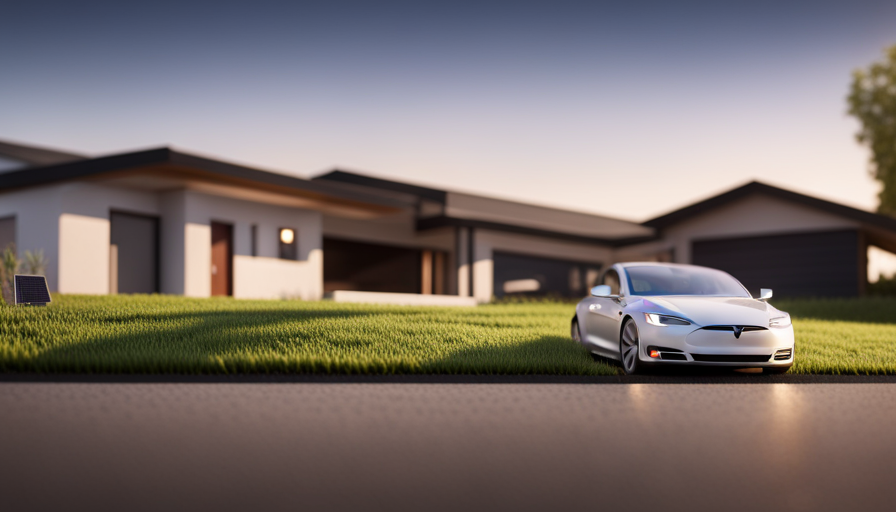
 Beginners Guides8 months ago
Beginners Guides8 months agoHow To Buy A Tesla Tiny House
-
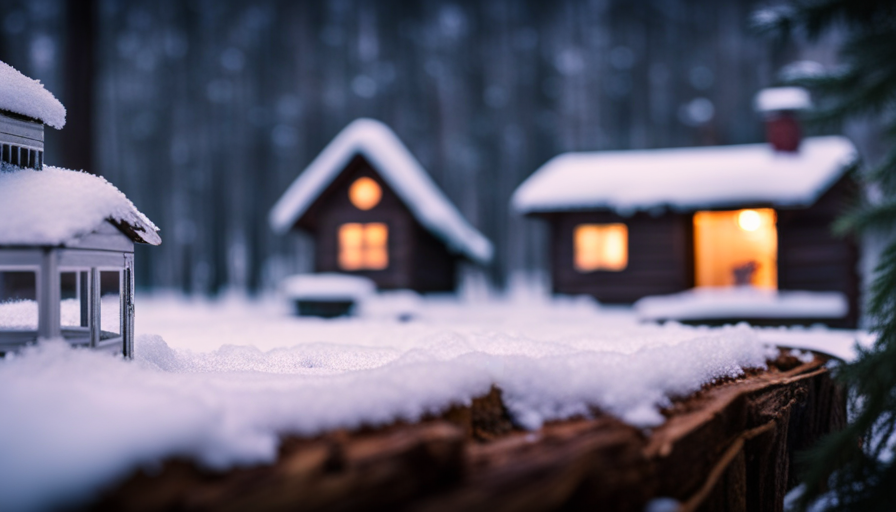
 Energy Efficiency6 months ago
Energy Efficiency6 months agoBest Tiny Homes For Cold Climates
-
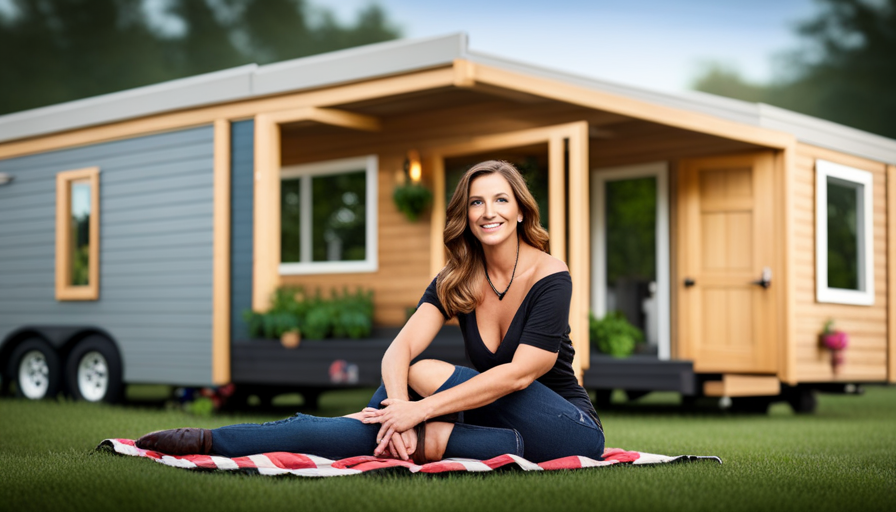
 Beginners Guides8 months ago
Beginners Guides8 months agoTiny House Nation Where Are They Now Stephanie
-
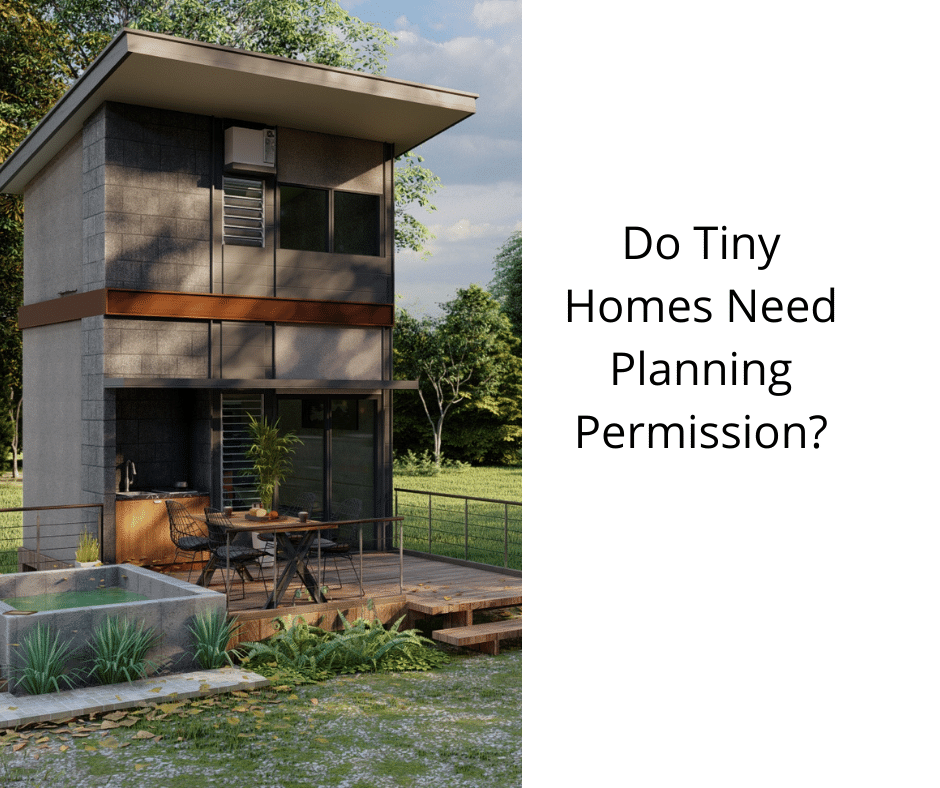
 Tiny House Resources (e.g., legalities, cost, insurance, FAQs)6 months ago
Tiny House Resources (e.g., legalities, cost, insurance, FAQs)6 months agoDo Tiny Homes Need Planning Permission?
-
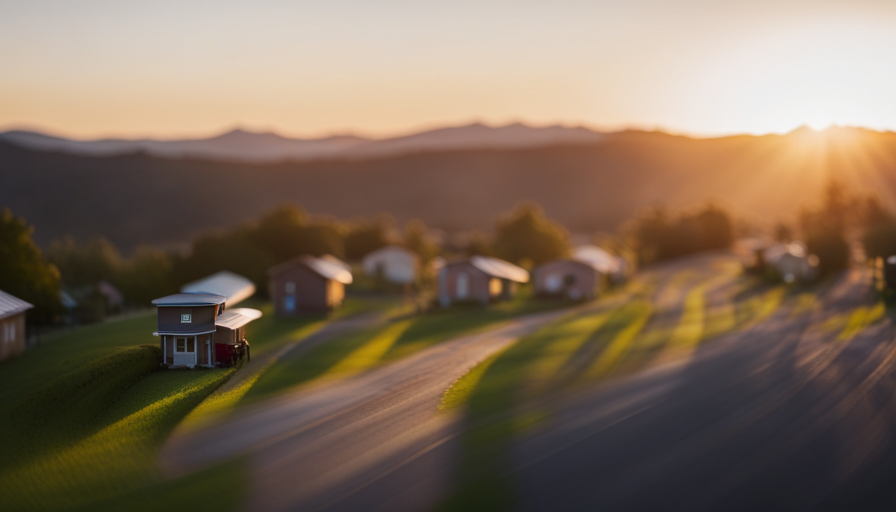
 Beginners Guides5 months ago
Beginners Guides5 months agoFrom The Show Tiny House Nation How Many Keep Their Tiny House?
-
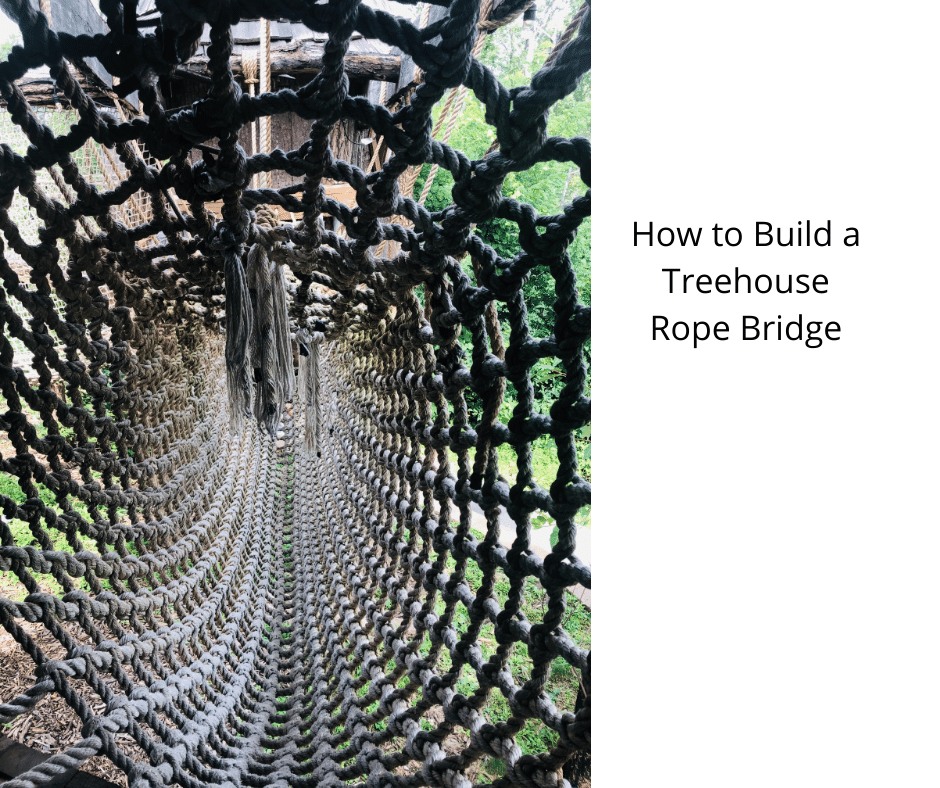
 Beginners Guides7 months ago
Beginners Guides7 months agoHow to Build a Treehouse Rope Bridge
-

 Beginners Guides7 months ago
Beginners Guides7 months agoUsing a Climbing Net For Treehouse Construction
-
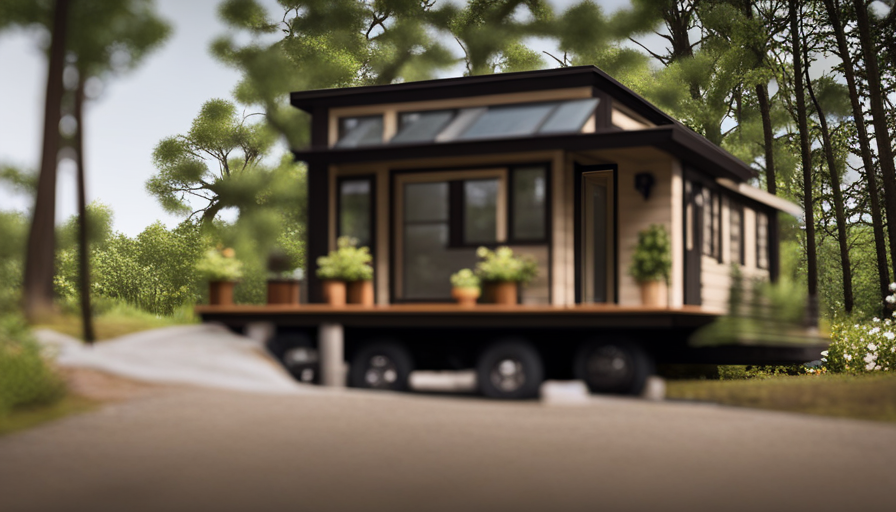
 Beginners Guides8 months ago
Beginners Guides8 months agoWhere To Buy Tesla Tiny House









